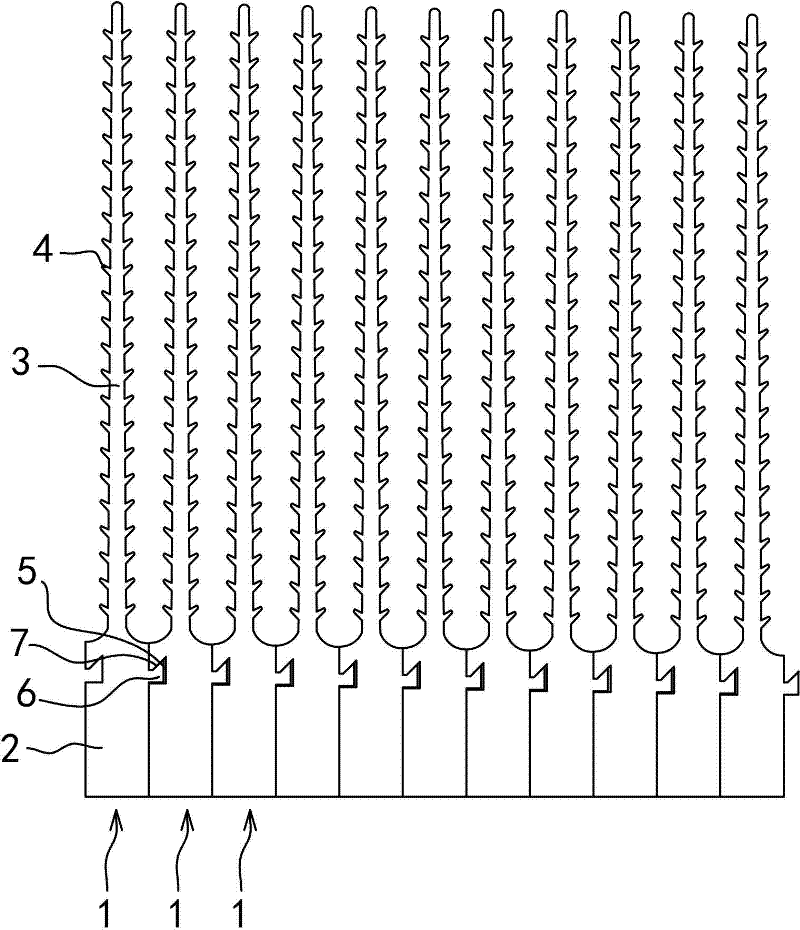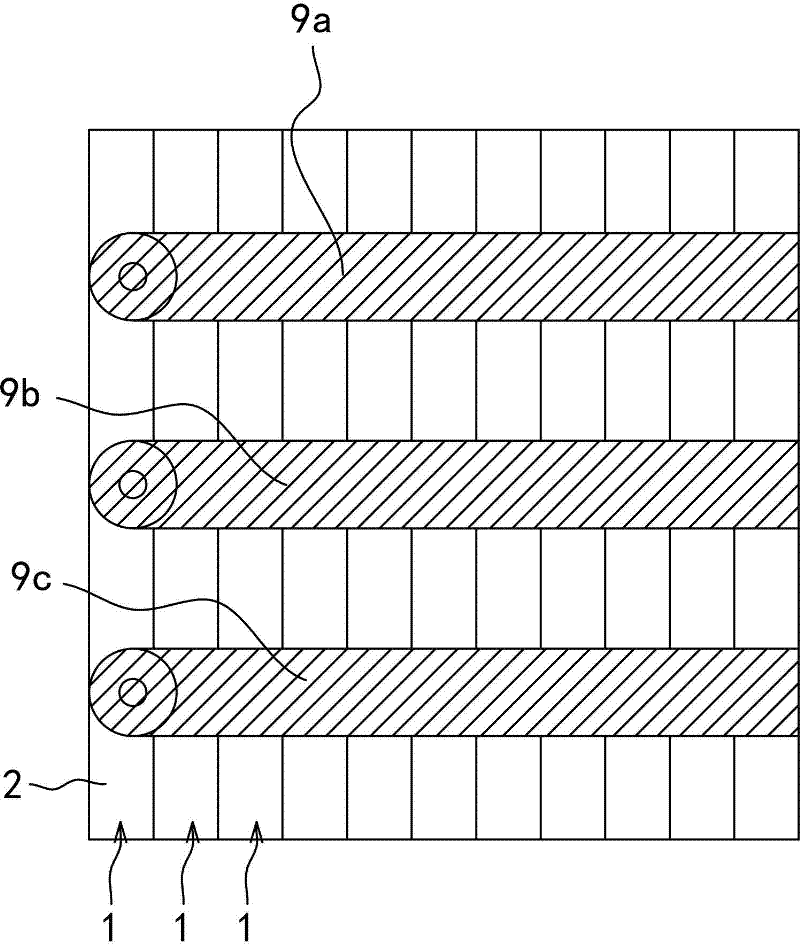High power fin cold plate radiator and manufacturing method thereof
A manufacturing method and technology of finned cold plates, which are applied in semiconductor/solid-state device manufacturing, electrical solid-state devices, semiconductor devices, etc., can solve problems such as high cost, low heat dissipation efficiency, and failure to achieve high-fold finning, and achieve small deformation and improved The effect of the heat transfer effect
- Summary
- Abstract
- Description
- Claims
- Application Information
AI Technical Summary
Problems solved by technology
Method used
Image
Examples
Embodiment
[0038]Example: see attached figure 1 ~As shown in attached drawing 6:
[0039] The utility model relates to a high-power-finned cold-plate radiator, which is composed of a plurality of heat-dissipating units 1 assembled together.
[0040] As shown in the accompanying drawing 1, each heat dissipation unit 1 is an extruded aluminum or copper profile with equal cross-section, and the cross-sectional profile is composed of a base plate 2 and a fin portion 3 protruding upward from the base plate 2 . The cross-sectional shape of the substrate portion 2 is rectangular, while the cross-sectional shape of the fin portion 3 is a vertical strip. Specific as figure 1 As shown, the width of the cross-section of the fin part 3 gradually narrows upward from the root, and a plurality of protruding strip-shaped thorns 4 are provided on both sides of the fin part 3 to increase the surface area. Moreover, among the opposite sides in the width direction of the base plate part 2 of each cooling...
PUM
 Login to View More
Login to View More Abstract
Description
Claims
Application Information
 Login to View More
Login to View More - R&D
- Intellectual Property
- Life Sciences
- Materials
- Tech Scout
- Unparalleled Data Quality
- Higher Quality Content
- 60% Fewer Hallucinations
Browse by: Latest US Patents, China's latest patents, Technical Efficacy Thesaurus, Application Domain, Technology Topic, Popular Technical Reports.
© 2025 PatSnap. All rights reserved.Legal|Privacy policy|Modern Slavery Act Transparency Statement|Sitemap|About US| Contact US: help@patsnap.com



